S k S k The
WrittenbyMadisonHDuring the month of February most people get caught up in doing things for others, but you shouldn’t forget about taking care of yourself!

ContinuedonPage09


During the month of February most people get caught up in doing things for others, but you shouldn’t forget about taking care of yourself!

ContinuedonPage09

Have you ever wondered how Groundhog Day came to be? Or why thousands of people gather in a small town in Pennsylvania to celebrate a groundhog named Phil, who predicts the weather?
Well, let’s go back to the beginning.
According to the Punxsutawney Groundhog Club, predicting weather is rooted in a Christian tradition called Candlemas Day. It first started when Christians would take candles to church and have them blessed, which they believed would bring them blessings during the winter. Then, that evolved into an English folk song that went like this:
If Candlemas be fair and bright, Come, Winter, have another flight; If Candlemas brings clouds and rain, Go Winter, and come not again.
It wasn’t until the folk song was introduced to the Germans that they created their own form of lore and brought in a hedgehog or another small animal to help predict the weather.
Now, you’re probably wondering … a hedgehog? According to German lore, if a hedgehog saw its shadow on Candlemas Day, or Feb. 2, there would be a ‘Second Winter.’ When the Germans migrated to Pennsylvania, they brought the tradition with them, but there was a lack of hedgehogs in the United States. Instead they started using a groundhog for their weather predictions.
Since then, the tradition has evolved into a full-fledged celebration.
The first mention of a groundhog predicting the weather was on Feb. 2, 1840 from a Welsh-American storekeeper in Pennsylvania who wrote, “Today the Germans say the groundhog comes out of his winter quarters and if he sees his shadow he returns in and remains there 40 days.”
It wasn’t until Feb. 2, 1887 in Punxsutawney, Pennsylvania that Groundhog Day officially became the celebration we all know today.
The Library of Congress states that the first Groundhog Day was loosely celebrated when a group from the Punxsutawney Elk’s Lodge went to Gobbler’s Knob, which is the home to Punxsutawney Phil, to enlist the help of a local groundhog to check the weather.
That visit quickly turned into an annual local ceremony at Gobbler’s Knob.
As the years went on, the tradition continued to transform, this time by the Pennsylvania Dutch community when they created Groundhog Lodges, which were organizations that helped maintain the Pennsylvania Dutch culture and language during meetings called ‘versammlinge.'
In his book “Serious Nonsense,” William Donner writes that he attended his first meeting where a statue of a groundhog and men wearing top hats were prominent. Members read weather reports out loud and members made a pledge to America … and an oath of allegiance to the lodge and the groundhog.
In the 1960s, the groundhog was officially given the name Punxsutawney Phil and continued to grow in popularity, especially in the 1990s, thanks to the movie “Groundhog Day” featuring Bill Murray.
On Feb. 2, Punxsutawney Phil comes out of his hole and ‘predicts’ the weather with a group called the Inner Circle. The Inner Circle is a group of 15 local dignitaries that are responsible for carrying out the yearly tradition, and feeding Phil, of course.
With the Inner Circle surrounding him, he comes out of his home and if he sees his shadow, we’ll have six more weeks of winter, but if he doesn’t see his shadow, we’ll have an early spring.
While it seems pretty simple, according to the National Centers for Environmental Information, Punxsutawney Phil correctly predicted the seasonal changes about 50% of the time. While it may not be best, it’s the thought that counts.
In case you were wondering, The Spark will announce Punxsutawney Phil's 2023 predication on our Instagram!
GRAPHIC DESIGNER
INTERESTED? LET'S CHAT!
APPLYNOW!



- Maha Shivaratri (India and Nepal)
- International Tug of War Day
- Presidents' Day


- International Mother Language Day

- George Washington's Birthday
- Fall 2023 Registration Opens
International

Continued From Cover Page ...
ByMadisonHTake time out of your day to do something for you; whether that be taking a bath, reading a book, getting a cup of coffee or even taking a nap. We all deserve some time to ourselves, so take this holiday season to be your own valentine.
Need some ideas? Here are some great Valentine’s ideas for you!

Take yourself out, whether that be to Starbucks or to a fancy restaurant. You deserve to be taken out! If you’re shy or anxious about going by yourself, you can take your favorite book, headphones and ignore the world or even just invite a friend.
FOR ME
Everyone deserves flowers, so get yourself your favorite flowers. If you are allergic, you can opt for fake flowers, lego flowers or a box of your favorite candy.

Don’t like any of those ideas? Go treat yourself to doing what makes you happy. This could be a new book, movie, manicure, chocolates, or even a vacation to the Bahamas. It can be something small or a splurge on something higher priced, depending on your budget.

We all need a bit of self-love, so why not write yourself a love letter? It could be a short letter just saying how much you love a certain aspect of yourself, a sweet note to remind you that you are beautiful, or a multipage letter on everything you love about yourself. Write like you are writing to a friend then read it back to yourself after. You can also keep the letter and read it to yourself when you need a pick-me-up.

Hopefully you find an idea that you enjoy and decide to treat yourself this holiday season. Even if your favorite thing about the holiday is giving to others, we hope you take some time out of your day to celebrate yourself. We all deserve a little bit of “me time”, so take this as an opportunity to set aside a bit of time to put yourself first.


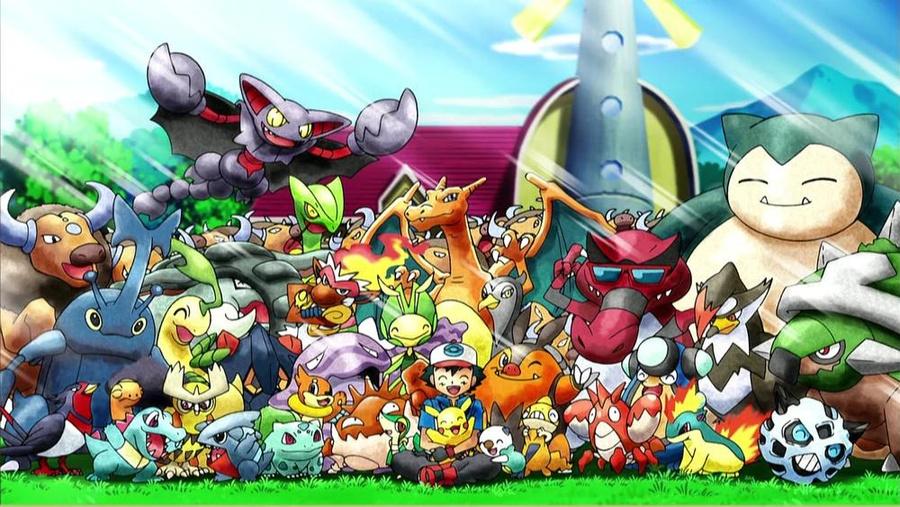 Written by Tanya Natar
Written by Tanya Natar
Pokemon is a childhood anime that I grew up watching; I remember rushing home from school and turning on the TV to keep up with the latest episodes. Spoilers ahead! Pokemon had its memorable episodes and farewells. The first time Ash said farewell to his friends in the first season made me teary-eyed. Misty and Brock were the original travel companions, so it was sad to see them leave Ash to go back to their hometowns and their lives. It was exciting when Brock returned to join Ash, but Misty got replaced with the new female character, May, and her annoying, bratty little brother, Max. It was tough accepting a new character at first, but eventually I got used to it.
Seeing Pokemon from an adult point of view rather than as a kid, I noticed that May was cuter than Misty. Every set of seasons, a new female character stepped in, each one looking better than the former - they kept leveling up. Then one day, Brock left the gang and Ash was joined by two new characters instead of just a new female character. That was probably the worst season and I couldn’t wait for it to end. The season after that, I liked the new set of characters who joined: Serena, Clemont, and his whiny little sister, Bonnie. Every season had their farewell episodes where the travel companions bid their goodbyes to Ash. None of them made me emotional apart from the original departure of Misty and Brock. However, after all that time, the farewell episode with Serena, Clemont and Bonnie, made me cry even more than Misty and Brock’s goodbye.
It's amazing how you could get attached to the characters in the series and don't want them to part ways with Ash. For the next set of seasons, the animation style changed to make Ash look more cartoonish and I hated it. It made Ash look like a clown in my opinion. When I shared my thoughts with fellow anime viewers, some of them liked the change in animation and Ash’s appearance, because they felt it was more authentic towards anime styling. That was the season where Ash won the championship league in that region, although the win was considered a pity win. The referee had declared the champion as the victor due to Ash’s Pokemon fainting, but the opponent mentioned that Ash’s Pokemon was just asleep and not knocked out. The champion could have just taken the win, but the episode had to have the sappy twist in order to favor Ash and let him take the victory. The farewell for this season was also sad, but in a sweet way where there were happy tears.

The latest season of Pokemon had the animation style almost back to the original’s. It was a blend of the animation style from the previous season and the original animation style. It wasn't perfect, but better than seeing a “clown” Ash. However, the latest season didn’t have much of a story and felt like a drag. I’m always looking forward to the next episode, even if Pokemon isn’t always a series to binge on, but I would never be able to watch more than one or two episodes at a time, and would need the break. The episodes felt like fillers just to drag the franchise longer. I feel Pokemon was way past overdue and needed to end. I got spoiled with the news that Ash is now the World Champion by defeating the World Champion Leon. It was such a major event in Japan, that they even played it on the famous Shibuya Crossing’s big screens, and celebrated this iconic win.

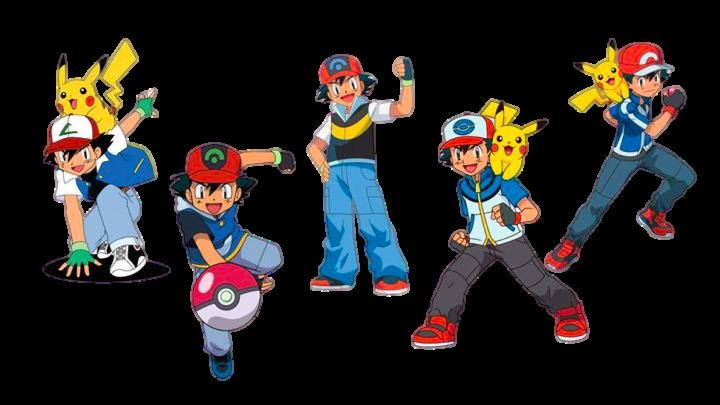



The next news that came after that was that Ash’s journey in Pokemon has come to an end. I was celebrating that news, more than the one where Ash was deemed the victor. I had been so tired of the new season of Pokemon, and wouldn’t have watched the next season if it were to have continued with Ash. It was time for Pokemon to end, and even the creators felt there was nothing more to add onto the Pokemon series after Ash won the title as the Pokemon World Champion.

With Ash’s novel finally coming to an end, there will be a final set of episodes to wrap up the story of Ash and Pikachu. I was thrilled to hear that these episodes will serve as a tribute to the original animation style of Pokemon as it will be so nice to see the original depiction of Ash. The current Pikachu is fine since the original Pikachu was chunky and not as cute. The arc of 11 episodes will be crammed with every main character and travel companion Ash encountered, and is expected to make the fans teary-eyed. The Pokemon fans will get to see what happens with Ash and Pikachu in their final moments after being crowned World Champion - exciting and bittersweet at the same time.
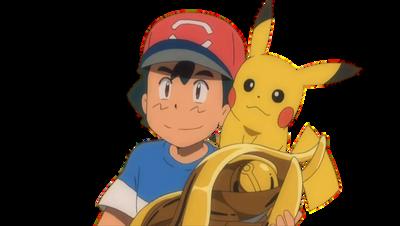
The next wave of news was the most disappointing. Pokemon was set to continue with two new main characters. Why couldn’t Pokemon be over? Why couldn’t it just end for good with Ash as the champion? Yes, it’s to have episodes that match the latest Pokemon video game that was released, but an anime isn’t exactly needed to advertise the game. With Pokemon not coming to an end, fans online were making comments at how they were going to miss Ash. I felt the same way. What could have ended as a legendary series, has now been revamped for future disappointment. I won’t be watching the next era of Pokemon, as my journey ends with Ash as well, but it’s amazing what a long run Pokemon had with 25 years, and made Ash a memorable part of our lives.
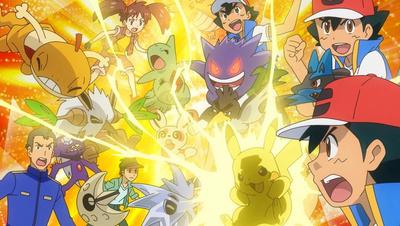



 Written by Aya M
Written by Aya M
Despite living oceans away from Palestine my whole life, the stories of the Nakba always kept me connected to my roots.
The Nakba occurred in 1948, and was an ethnic cleansing campaign launched by Zionist militias against the native Palestinian population. This violence birthed the state of Israel and forcibly expelled 750,000 Palestinians from their homeland, many of whom still live in refugee camps.
Yet, growing up, the traumatic events of the Nakba were only told within the confines of my home – rarely ever mentioned in history class, covered in the news or represented in cinema.
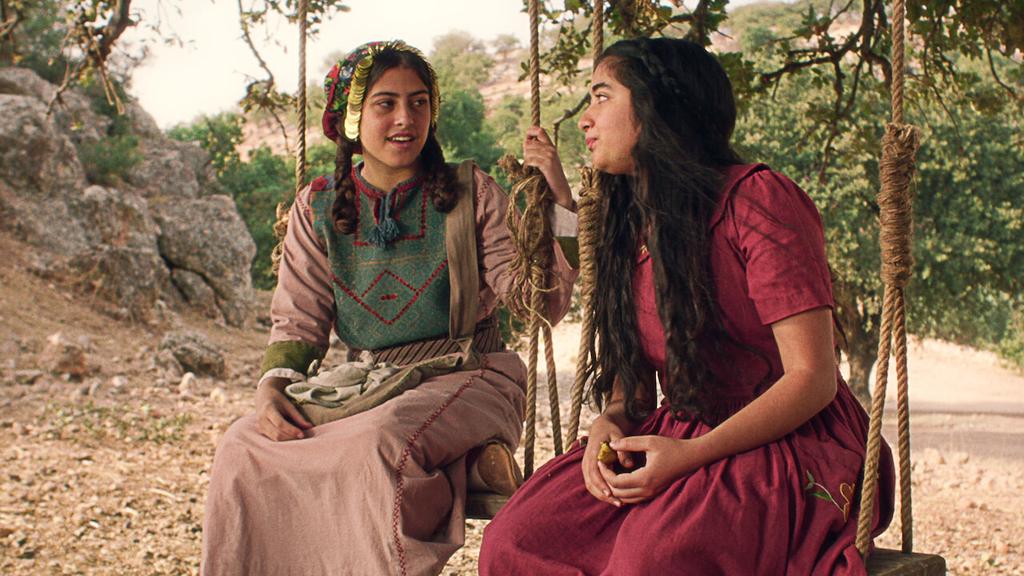
Palestinians have long struggled to gain recognition in the mainstream conversation.
The media, in particular, plays a major role in keeping the Palestinian narrative out of the public eye. Criticism of the Israeli government is often met with false accusations of antisemitism, which can deal a fatal blow to a news outlet’s credibility and revenue.
So to avoid controversy, news outlets sacrifice independence and accuracy for a comfortable status quo. They align their coverage with foreign policy and the dominant pro-Israel narrative, disregarding Israel’s blatant and persistent violations of human rights.

However, news outlets are not the only ones silent toward Israel’s ongoing apartheid in occupied Palestine. In 2021, Human Rights Watch released a report criticizing Facebook for deliberately restricting, suspending and shadowbanning the accounts of Palestinian activists and journalists.
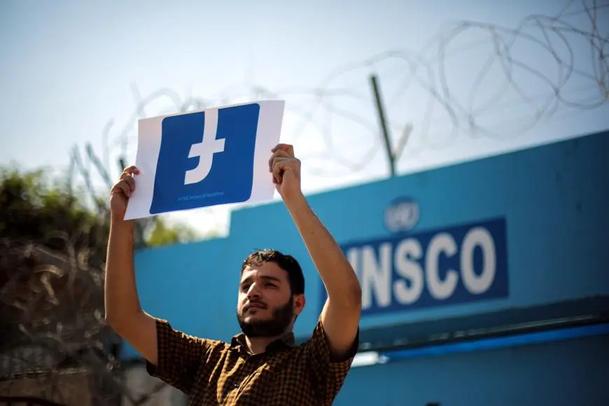
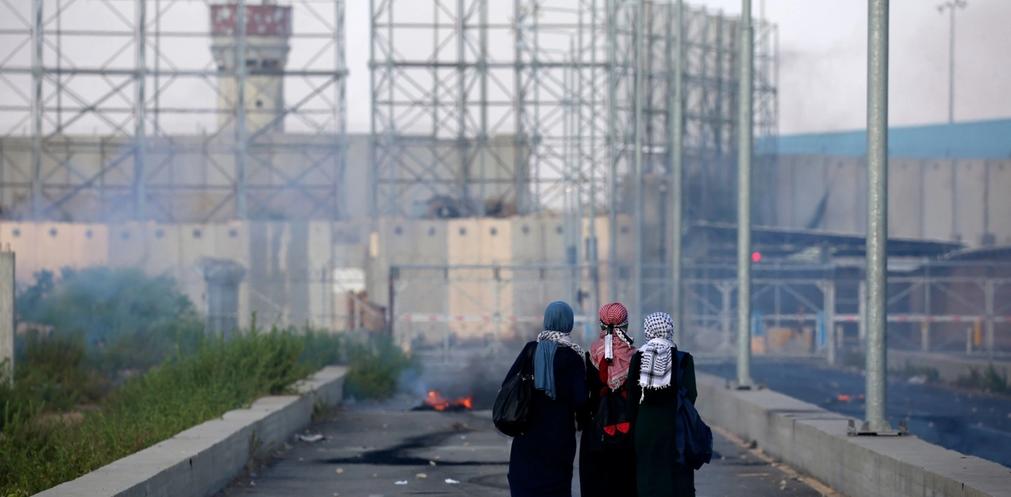
Human rights think tank Al-Shabaka explains that this pattern of suppression creates a “dangerous discourse,” one that propagates misinformation and normalizes injustice. By cutting out Palestinians from their own stories, the media denies them the ability to represent and express themselves. Widespread media bias and censorship have, in turn, built a massive wall of silence that isolates Palestinians from the rest of the world.
The debut feature film “Farha” by Jordanian director Darin Sallam successfully breaks through this wall of silence, challenging the consistent exclusion of Palestinians from public discourse. It is the first film about the Nakba to be shown on a big screen and reach a Western audience. It is a masterful and faithful retelling of the horrific atrocities of the Nakba, which are systemically censored by Israel. Since its long-awaited Netflix release in December, “Farha” has demonstrated the power of storytelling in affirming Palestinian existence, raising critical awareness and fostering inclusive dialogue.
Based on a true account, “Farha” depicts the Nakba from the lens of Farha, a spirited and determined 14-year-old girl who yearns to move away from her small village and become a schoolteacher. She eventually succeeds in convincing her father to attend school in the city with her best friend. But her dream is crushed when Zionist forces invade the village. To keep her safe from the attacks, her father locks her in a pantry and promises to come back for her. Alone, Farha witnesses the brutality of the Zionist occupation through the cracks of her hiding place. Set mostly in a dark, claustrophobic setting, the film takes viewers on an uncomfortable but necessary journey of suffocating loss, desperation and helplessness – the very emotions Palestinians felt in 1948.

But before telling the story of the Nakba, the film opens in a picturesque hillside village where the people lead a peaceful and happy life. This opening act visualizes the bittersweet memories of the Palestinian homeland and, in doing so, shatters the popular Zionist myth that Palestine was “a land without a people for a people without a land.”

Sallam takes a moment to share with the world a whole and prosperous Palestine – a Palestine before Israel. The captivating visuals of green valleys, authentic costumes and Levantine architecture show that Palestine was not an empty land but a land with a people, a culture and a thriving society.
Throughout the film, Sallam does not shield her audience from the violent reality of the Nakba, in which a series of Zionist massacres killed 15,000 Palestinian civilians and destroyed roughly 530 villages. While difficult to watch, Sallam’s discussion of these crimes is essential because it dismantles the common yet false claim that the Palestinians “voluntarily left” their homeland.
In one heart-wrenching scene, Farha witnesses the murder of a Palestinian family. Skillfully crafted, the scene does not overemphasize the crime for shock value and instead focuses on its emotional and psychological toll on Farha.
“I don’t want to talk about war but it’s there as part of her journey,” Sallam told TIME Magazine in an interview. “It’s about her feelings on what she’s witnessing.” The film goes beyond depicting bloodshed and war; it also highlights trauma and survival. Nonetheless, the most compelling aspect of the film is its unique protagonist. Teenage Farha connects the audience to the Nakba on a personal level. There is something all viewers can relate to in her dreams, ambitions and fears. While the film leaves out the largescale violence that ravaged historic Palestine, Farha's individual experience places humanity at the core of this tragic event.
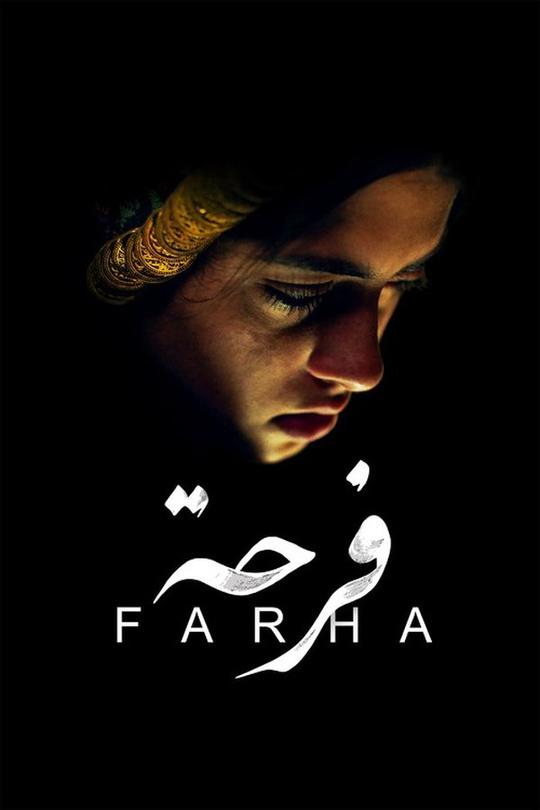
Through Farha, the audience sees Palestinians as resilient survivors and as fellow human beings, not just as war victims. Sallam puts a human face on a long-forgotten and constantly denied part of history – and that is what makes “Farha” such a special film.
Soon after the release of “Farha,” Israeli officials targeted the film and Netflix with a smear campaign. However, Israel’s attempts at censorship failed, and “Farha” remains available to stream on Netflix.
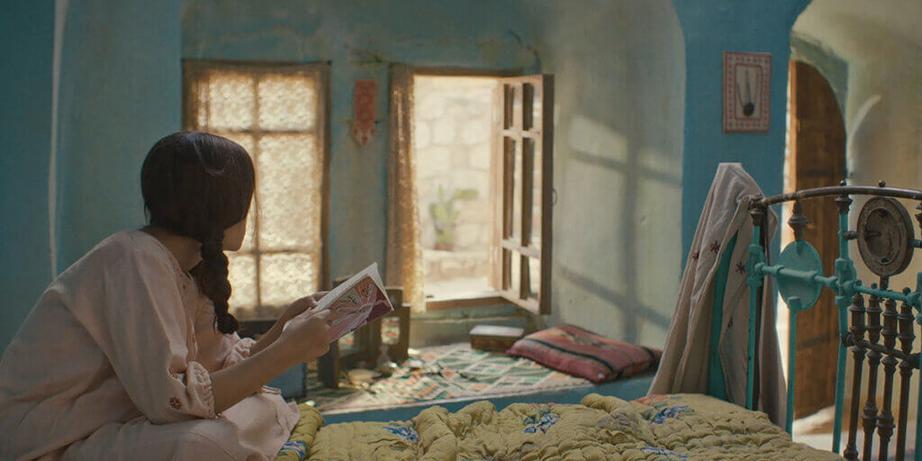
More social media platforms should follow in the footsteps of Netflix. Social media gives the voiceless a way to be heard. With this great power, platforms have an even greater responsibility to create and promote inclusive spaces for conversation; one group alone should not dominate an entire narrative. When platforms like Facebook give into censorship, it solely benefits oppressive forces and enables them to consolidate their grip on information flows and thus manipulate public opinion.
Platforms should, therefore, amplify Palestinian voices so the wider public can gain a nuanced understanding of what is happening in occupied Palestine. Then and only then will we get closer to the truth and pave the way for justice.
As a young Palestinian-American, “Farha” was a painful yet hopeful watch. It made me realize the importance of storytelling in the Palestinian movement. It also reminded me of why I decided to pursue a career in journalism in the first place: To make the lived experiences of ordinary Palestinians known to the world.
Storytelling – whether in filmmaking, art or journalism – offers an opportunity to shed light on who we are and what we are fighting for. But Palestinian storytelling does more than shed light; it documents and preserves a history Israel has so desperately tried to bury. “Farha” marks a new, monumental shift in the conversation on Palestine and Israel. A conversation that tears down the walls of colonialism to build a just future.

Mistakes can cause serious damage to an organization's reputation and future. Despite the effort an individual puts in, no one is perfect. Employees make mistakes without recognizing the true danger this can be to the organization’s cybersecurity. These unintended actions can include: failing to create a strong password, downloading malware-infected files, and poor patch management. Due to human error, security breaches can occur which lead to data loss and system damage.

Although human error cannot be prevented, it can be reduced. The best way to begin is by implementing stronger work practices. Here are three tips to consider to mitigate human error!

The principle of least privilege explains that an employee is only given enough permissions in order to complete their task. For example, consider an organization with employees and a manager. The accounts of employees have few permissions according to their task. If a hacker gets hold of one of these less privileged accounts through a phishing email, this causes only little damage. However, if the hacker was able to compromise an administrative account, that would lead to costly damage. Ensuring that most accounts have limited access to sensitive information is critical. By doing so, this principle will improve performance and minimize security attacks.

Security awareness training is an effective strategy used to reduce risks. This helps guide employees to acquire enough knowledge to identify and avoid cyber attacks. Some important topics that should be covered during training are phishing, malware, and authentication.


Communicating effectively in the workplace is one of the best practices to reduce human error. Employees should feel comfortable communicating with their co-workers and manager(s) about an issue or misunderstanding. Doing so regularly will verify that everyone understands their task correctly. If there is a risk, the people in the workplace should alert each other to quickly implement effective solutions.

Everyone makes mistakes, especially when under pressure. However, human error in security is not to be taken lightly. Individuals can learn to make fewer errors that cause breaches in cybersecurity. Organizations and employees can start by shifting away from bad habits and planning the best strategies to maintain their reputability.





Aya M
Maddie H
Natasha Geiger
Ruby
Tanya Natar
Aya M
Delaney Crocker
Leslie Madrid
Natasha Geiger
Yaretzi Chavez
Aya M
April Fan
Paloma Baron
Ruby
Max Zimmerman
John V. Ferrigno
Zoe Cain
Brianne Frazier
Roxanne Wilcox
Leslie Madrid
Editor in Chief Director of Editing
Zoe Cain Director of Writing
Lila Flores Director of Communications
Aya M Director of Graphic Design
Delaney Crocker
Director of Operations